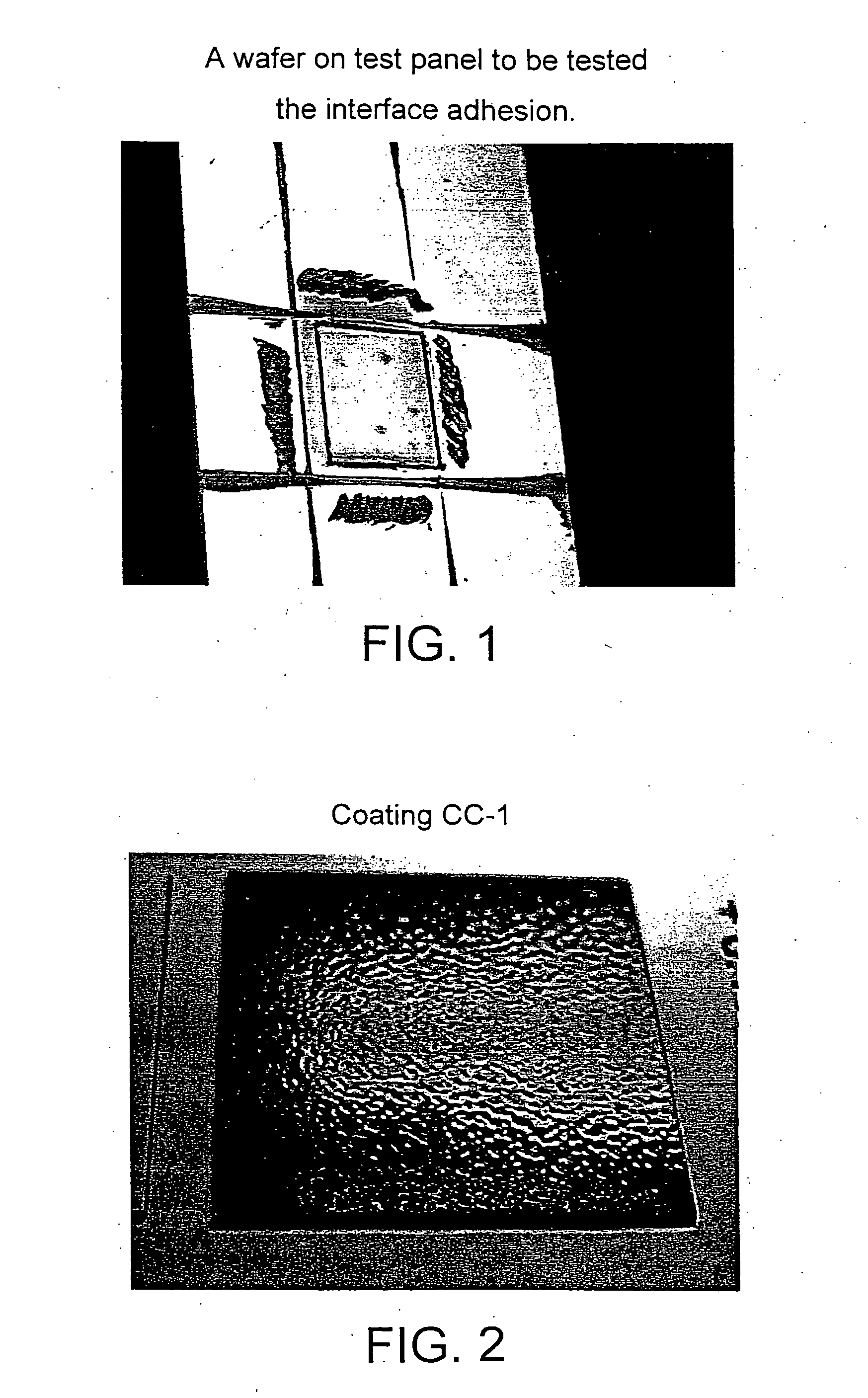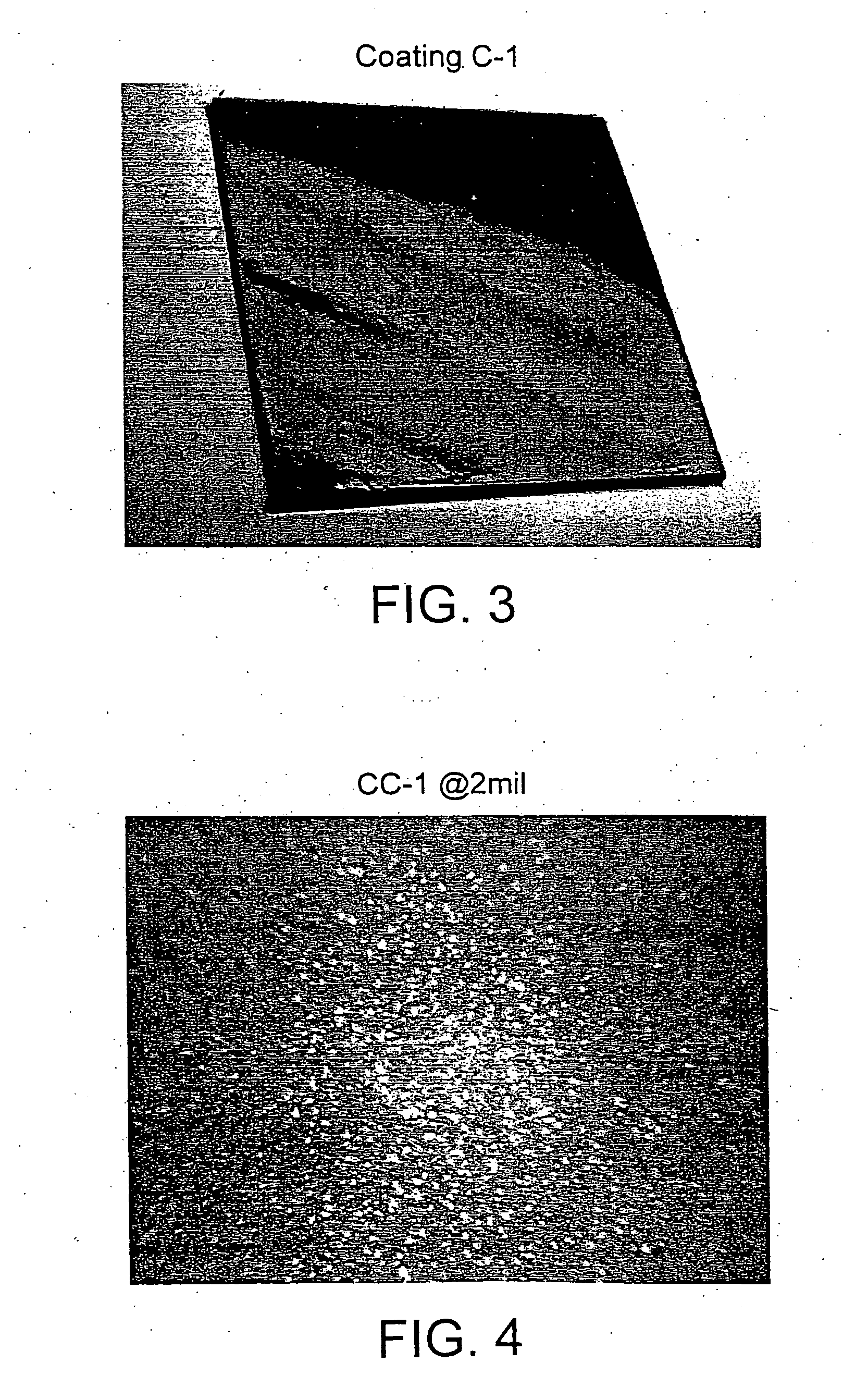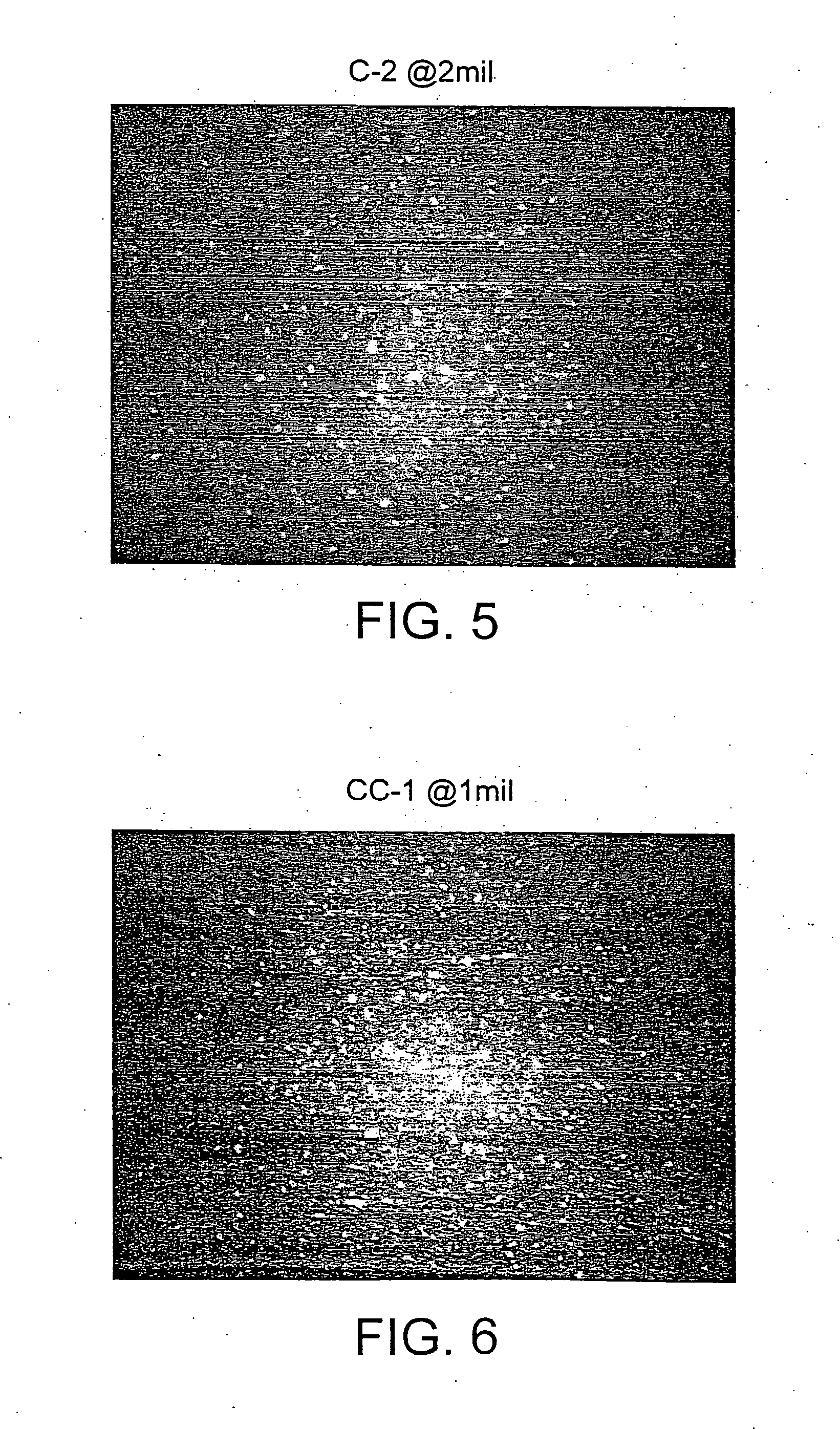Glycidyl (meth)acrylate powder coating compositions containing caproloactone-derived side chains
a technology of acrylate and acrylate, which is applied in the direction of coatings, powdery paints, manufacturing tools, etc., can solve the problems of preventing gma powder coatings from becoming widely accepted, gma powder coatings can severely contaminate other powder coating systems, and gma powder coatings can be difficult to achiev
- Summary
- Abstract
- Description
- Claims
- Application Information
AI Technical Summary
Benefits of technology
Problems solved by technology
Method used
Image
Examples
example 1
Comparative Example—Control Resin—C1
[0071] A two gallon Parr reactor was charged with 1930 grams of xylene that was stirred at 200 rpm. Air was eliminated by consecutively pressuring and depressurizing the reactor to 60 psig with dry nitrogen four times. The mixture was heated to 139° C., after which a mixture of 450 grams of styrene, 1020 grams of methyl (meth)acrylate, 675 grams of n-butylacrylate, 855 grams of glycidyl(meth)acrylate, 3 grams of n-dodecylmercaptan and 134.1 grams oft-butylperoctoate was pumped into the reactor over 5 hours at 139° C. and autogenous pressure. The charging pump and lines were rinsed with 100 grams of xylene and the polymer solution was allowed to cool to 130° C. over 15 minutes. A mixture of 60 grams xylene and 15 grams t-butylperoctoate was added over two hours as the temperature fell from 130° C. to 100° C. The pump and lines were rinsed with 10 grams of xylene and the polymer solution held for 30 minutes at 100° C. The product solution was cooled...
example 2
Resin—R1
[0073] A two gallon Parr reactor was charged 1286 grams of xylene which was stirred at 200 rpm. Air was eliminated by consecutively pressuring and depressurizing the reactor to 60 psig with dry nitrogen four times. The mixture was heated to 150° C., after which a mixture of 450 grams of styrene, 1020 grams of methyl (meth)acrylate, 336 grams of Tone M-100, 855 grams of glycidyl(meth)acrylate, and 54.0 grams of Di-t-amyl peroxide were pumped into the reactor over 4 hours at 150° C. and autogenous pressure. The charging pump and lines were rinsed with 100 grams of xylene and the polymer solution was allowed to cool to 130° C. over 15 minutes. A mixture of 60 grams xylene and 15 grams t-butylperoctoate was added over two hours as the temperature fell from 130° C. to 100° C. The pump and lines were rinsed with 10 grams of xylene and the polymer solution held for 30 minutes at 100° C. The product solution was cooled down to 70° C. for discharging.
[0074] The product solution was ...
example 3
Resin—R2
[0075] A two gallon Parr reactor was charged 1286 grams of xylene that was stirred at 200 rpm. Air was eliminated by consecutively pressuring and depressurizing the reactor to 60 psig with dry nitrogen four times. The mixture was heated to 150° C., after which a mixture of 450 grams of styrene, 1260 grams of methyl (meth)acrylate, 435 grams of Tone M-200, 855 grams of glycidyl(meth)acrylate, and 54.0 grams of Di-t-amyl peroxide were pumped into the reactor over 4 hours at 150° C. and autogenous pressure. The charging pump and lines were rinsed with 100 grams of xylene and the polymer solution was allowed to cool to 130° C. over 15 minutes. A mixture of 60 grams xylene and 15 grams t-butylperoctoate was added over two hours as the temperature fell from 130° C. to 100° C. The pump and lines were rinsed with 10 grams of xylene and the polymer solution held for 30 minutes at 100° C. The product solution was then cool down to 70° C. for discharging.
[0076] The product solution wa...
PUM
| Property | Measurement | Unit |
|---|---|---|
| weight % | aaaaa | aaaaa |
| weight % | aaaaa | aaaaa |
| weight % | aaaaa | aaaaa |
Abstract
Description
Claims
Application Information
 Login to View More
Login to View More - R&D
- Intellectual Property
- Life Sciences
- Materials
- Tech Scout
- Unparalleled Data Quality
- Higher Quality Content
- 60% Fewer Hallucinations
Browse by: Latest US Patents, China's latest patents, Technical Efficacy Thesaurus, Application Domain, Technology Topic, Popular Technical Reports.
© 2025 PatSnap. All rights reserved.Legal|Privacy policy|Modern Slavery Act Transparency Statement|Sitemap|About US| Contact US: help@patsnap.com



